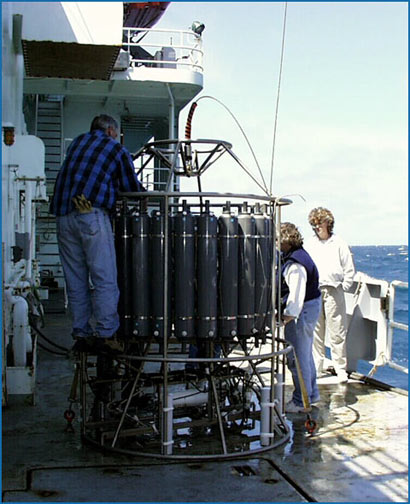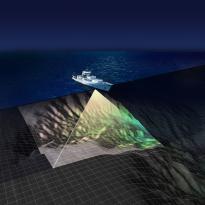CTD
The conductivity-depth-temperature (CTD) takes many different kinds of ocean-water measurements and transmits the data back to the ship.
Determing the Speed of Sound in Water
Data collected by the conductivity-temperature-depth (CTD) system help determine the speed of sound, which
varies with water temperature and salinity. This information then used
to correct the bathymetric maps created from acoustical data
Sampling in Real Time
The CTD is mounted on a tall, round metal frame, which hosts 24, 10-liter bottles for sampling fluids in real time. The instrument also hosts oxygen, methane, and eH sensors, and a transmissometer that measures the amount of particulates in the water
Bottles on a Frame
Each bottle is mounted on the frame that has two spring-loaded end caps that are fixed in the open position when the instrument package goes into the water—i.e. the bottles are a hollow tube with both ends open to the ocean. When we see an interesting anomaly in the water column we can electronically snap the end caps closed, trapping fluids immediately. In this way we can bring the instrument back onboard and retrieve the sampled water, which is later analyzed for its chemical and biological content.
Data Transmitted to the Ship
The CTD is connected to the ship by a conducting wire, so that an electronic signal may be sent down and up the wire. When the instrument is in the water, data are continuously transmitted to the ship. Scientists on board use the data to measure the chemical, thermal, and particulate character of the water that the instrument is in or passing through.

























